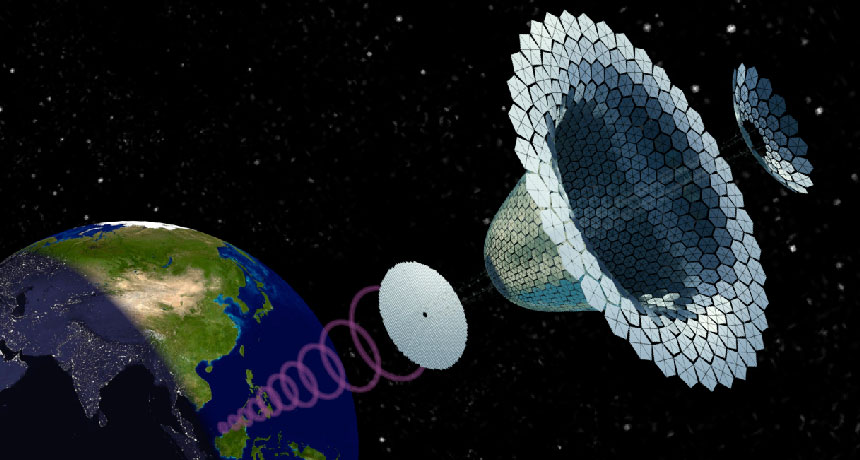50 years ago, scientists wanted to build solar panels on the moon
Excerpt from the June 14, 1969 issue of Science News

STELLAR POWER The SPS-Alpha solar satellite, shown in this illustration, was presented to NASA as a possible design for space-based solar power. The cone of solar cells collects the energy. The cells then convert the energy to microwaves and beam it down to Earth to use as electricity.
John C. Mankins/U.S. Navy
 Solar power from moon to Earth —
Solar power from moon to Earth —






